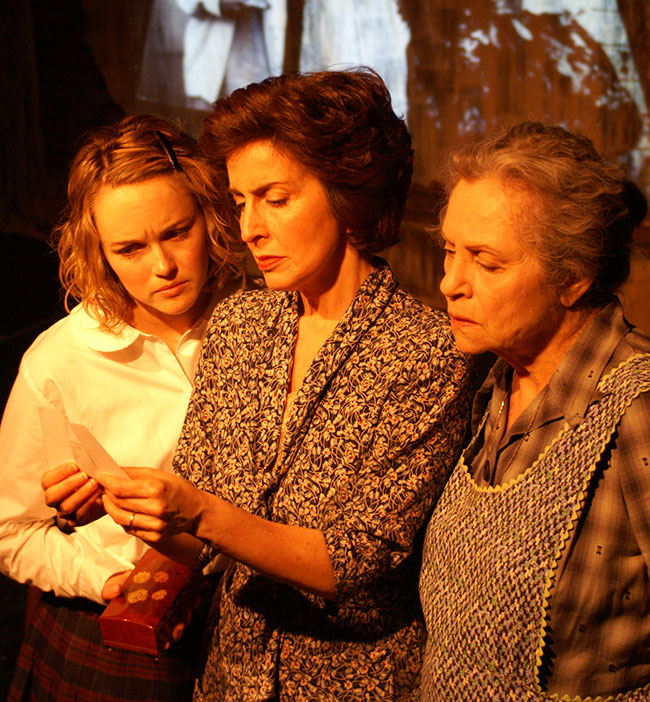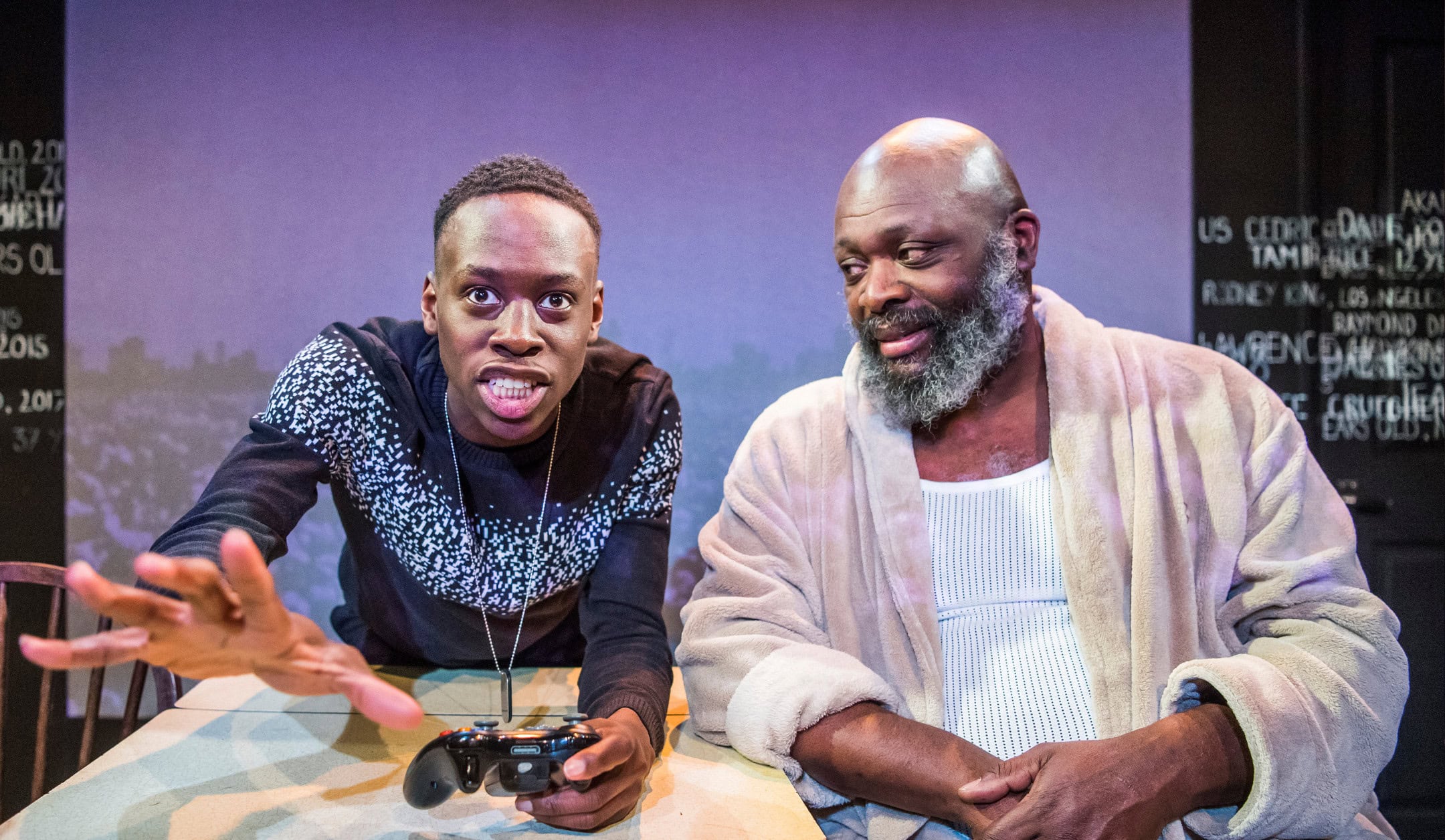
We walk by the soon to be defunct Carnegie Deli on Seventh Avenue in New York City. I am walking at my usual New York pace which winds up being 5 steps in front of my friend and playwriting partner, Sue Bigelow. She is visiting from Northern California — her second trip east but first one at length. I stop to look behind me, to make sure she’s still there, not lost, not sidetracked by the smell of the pastrami. Yes, she’s still there, but content to be behind me. Every time I slow down so she can catch up, she too slows down, looking at something eye catching to a tourist, banal to a New Yorker. So I walk on, and keep looking behind to make sure she’s still there. It is 1995.
Sue returns home and writes the first draft of Rose Colored Glass. It is our third collaboration, with Sue as chief writer, me as director and dramaturg, then as co-author.
I travel to Humboldt County in Northern California in March. Sue is Founding Artistic Director of Plays-In-Progress, a not for profit that focuses on new work. She fully produces a season of new plays from authors around the country; that in itself amazes me. The theater is an old Masonic Temple above a brew pub — mixed in with the smell of hops and malt is redwood, all of it permeating the huge flexible space of the theater.
Sue and I have spent many hours on the phone working on the play but it has not even had a reading when I arrive. As a matter of fact, the ending doesn’t exist. Undaunted, we head into rehearsal. After all, we have 3 ½ weeks to mount the show.
Briefly — the show takes place in 1938. It is the story of an Irish woman and a Jewish woman, who live across an alley from each other in Chicago. They dislike and distrust each other intensely. The Irish woman is also raising her 13 year old granddaughter. It is the story then of how these two women become friends, with a great deal of “noodging” from the granddaughter, when they try to get the Jewish woman’s nephew out of Europe before the war.
But we still have no idea how it’s going to end.
We decide to add visuals to the production. During our research — done the old fashioned way, via microfilm and old magazines, documents, and newspapers, we realize the extra punch we can gain with slides. Yes, slides; black and white slides. Also, we come to realize how little people actually know of what went on during that time period. Especially when it comes to immigration and the plight of Jews in Europe in the 1930’s. Our set designer takes photos — we create slides, we divide the audience in half with the playing area between. Europe/America. Two sides of an alley.
As we progress in rehearsal we discuss the possibilities of the ending. Does the boy get here? Does he not? We begin to grasp what it could be, the scene is written, it doesn’t work. We re-work it, still not happy. And then I jump up one day and tell my actresses to throw their scripts down and we begin to improvise. Over and over. Sue takes copious notes. Then there is the moment, that moment — when the exact right lines are uttered from our guts — and we freeze. I look behind me. Sue is right there, scribbling away. She takes our improv home and comes in the next day with the ending of the play.
Cut to 12 years later. The digital world is upon us. We mount Rose Colored Glass in New York Off-Broadway. This time there are no slides, there are videos, and an alley wall that doubles as a video screen. And composed music. And Broadway actresses. And more good reviews. And publication by Samuel French, Inc. And we are an NEA Big Read Selection. Since then there have been productions elsewhere in the country; perhaps the most satisfying — an extended run in Prague.
When a reporter asks Sue Bigelow where the story came from. She tells him this — “My grandparents owned a little deli on the South Side of Chicago. And it started there…” What she doesn’t tell him, but tells me, years later, is this — “It was so reassuring, so comforting, when you turned to keep track of me that day by the Carnegie Deli. You looked behind you to make sure I was okay. And just between us, that is the real inspiration for the play.”
From the end of Act I of Rose Colored Glass:
ROSE turns and goes to the Deli. LADY watches her, then turns and walks to the Pub door. LADY stops and turns back to look at ROSE. They freeze. PEG steps out into the alley.
PEG: “My grandmother had spent most of her life looking behind her keeping track of my grandfather, my father, me…and the pain…the very thing that made her strive onward was also the thing she kept looking over her shoulder at…
LADY goes inside. ROSE then turns at looks back at the Pub.
PEG: And I think Mrs. Fleishman needed someone who cared enough to look back at…at her.”
Janice did not write one word of that.
Sue Bigelow passed away in 2013. There remains a big hole in my heart and creative soul. But Rose Colored Glass lives on. And I bet, that when Sue turns around and looks back, from wherever, she is eternally grateful.
To purchase a copy of Rose Colored Glass click here, and to learn more about licensing a production, click here.

Popular Comedies for High Schools

Media Multi-Hyphenates: Playwrights in Film & TV

